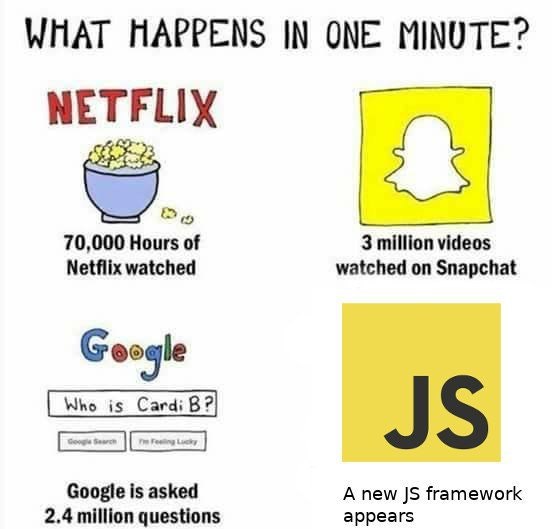Join devRant
Do all the things like
++ or -- rants, post your own rants, comment on others' rants and build your customized dev avatar
Sign Up
Pipeless API

From the creators of devRant, Pipeless lets you power real-time personalized recommendations and activity feeds using a simple API
Learn More
Related Rants

 The facts are quite accurate
The facts are quite accurate
When the CTO/CEO of your "startup" is always AFK and it takes weeks to get anything approved by them (or even secure a meeting with them) and they have almost-exclusive access to production and the admin account for all third party services.
Want to create a new messaging channel? Too bad! What about a new repository for that cool idea you had, or that new microservice you're expected to build. Expect to be blocked for at least a week.
When they also hold themselves solely responsible for security and operations, they've built their own proprietary framework that handles all the authentication, database models and microservice communications.
Speaking of which, there's more than six microservices per developer!
Oh there's a bug or limitation in the framework? Too bad. It's a black box that nobody else in the company can touch. Good luck with the two week lead time on getting anything changed there. Oh and there's no dedicated issue tracker. Have you heard of email?
When the systems and processes in place were designed for "consistency" and "scalability" in mind you can be certain that everything is consistently broken at scale. Each microservice offers:
1. Anemic & non-idempotent CRUD APIs (Can't believe it's not a Database Table™) because the consumer should do all the work.
2. Race Conditions, because transactions are "not portable" (but not to worry, all the code is written as if it were running single threaded on a single machine).
3. Fault Intolerance, just a single failure in a chain of layered microservice calls will leave the requested operation in a partially applied and corrupted state. Ger ready for manual intervention.
4. Completely Redundant Documentation, our web documentation is automatically generated and is always of the form //[FieldName] of the [ObjectName].
5. Happy Path Support, only the intended use cases and fields work, we added a bunch of others because YouAreGoingToNeedIt™ but it won't work when you do need it. The only record of this happy path is the code itself.
Consider this, you're been building a new microservice, you've carefully followed all the unwritten highly specific technical implementation standards enforced by the CTO/CEO (that your aware of). You've decided to write some unit tests, well um.. didn't you know? There's nothing scalable and consistent about running the system locally! That's not built-in to the framework. So just use curl to test your service whilst it is deployed or connected to the development environment. Then you can open a PR and once it has been approved it will be included in the next full deployment (at least a week later).
Most new 'services' feel like the are about one to five days of writing straightforward code followed by weeks to months of integration hell, testing and blocked dependencies.
When confronted/advised about these issues the response from the CTO/CEO
varies:
(A) "yes but it's an edge case, the cloud is highly available and reliable, our software doesn't crash frequently".
(B) "yes, that's why I'm thinking about adding [idempotency] to the framework to address that when I'm not so busy" two weeks go by...
(C) "yes, but we are still doing better than all of our competitors".
(D) "oh, but you can just [highly specific sequence of undocumented steps, that probably won't work when you try it].
(E) "yes, let's setup a meeting to go through this in more detail" *doesn't show up to the meeting*.
(F) "oh, but our customers are really happy with our level of [Documentation]".
Sometimes it can feel like a bit of a cult, as all of the project managers (and some of the developers) see the CTO/CEO as a sort of 'programming god' because they are never blocked on anything they work on, they're able to bypass all the limitations and obstacles they've placed in front of the 'ordinary' developers.
There's been several instances where the CTO/CEO will suddenly make widespread changes to the codebase (to enforce some 'standard') without having to go through the same review process as everybody else, these changes will usually break something like the automatic build process or something in the dev environment and its up to the developers to pick up the pieces. I think developers find it intimidating to identify issues in the CTO/CEO's code because it's implicitly defined due to their status as the "gold standard".
It's certainly frustrating but I hope this story serves as a bit of a foil to those who wish they had a more technical CTO/CEO in their organisation. Does anybody else have a similar experience or is this situation an absolute one of a kind?
rant
framework
microservices
cto
bottlenecks
ceo